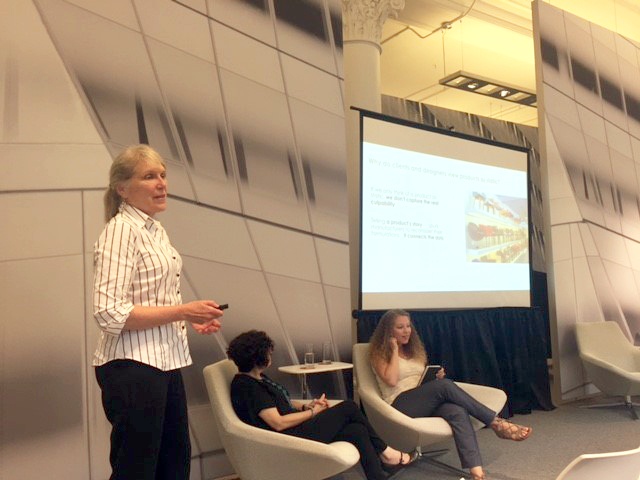Members of the NYC Collaborative gathered on Monday, August 15th to discuss materials transparency and health in manufacturing.
Moderator: Jen Preston, BKSK Architects
Speakers:
- Catherine Bobenhausen, Vidaris
- Rachel Berman, Mechoshade
- Susan Kaplan, HLW
The evening began with an introduction to the Health Product Declaration (HPD) by Susan Kaplan. Susan discussed how the HPD Collaborative is committed to improving the building industry’s health and performance. The document was described as “the missing piece to provide a method for transparent reporting and disclosure.”
Next, Rachel Berman covered the information captured within the Cradle to Cradle (C2C) certification. She provided insight into how the C2C third-party health assessments break down an item into homogenous materials. Rachel covered the methods of gathering information from suppliers about the product disclosures and outlined the way a final material assessment is developed and rated with an assigned material health score. International Living Future Institute’s Declare label, which was designed to help architects specify products for Living Building Challenge projects, was then discussed. “The Declare label allows a company to proactively declare what’s in their product to make specifications much easier,” Rachel stated.

Photo Credit: Ryan Hughes
Catherine Bobenhausen followed, speaking about tools. Catherine mentioned that “we never thought to ask what was in our building products... [now], these disclosure documents reveal what's in our materials and encourage manufacturers to make different choices.” She brought some insight about the Green Screen assessment and how the final scores are determined. She also talked about VOC Emissions testing and identified how only a handful of qualified testing labs exist. Catherine shared a couple learning experiences with the group about a LEED building project on Long Island. One, the on-site presence with the various indoor air quality testing equipment got the attention of the General Contractor (GC). Two, Catherine stressed the importance of allowing proper time to air out spaces before permitting occupancy, as often there is a last-minute scramble for paint touch-ups and cleanups that affect the building inhabitants and the overall air quality. “Industrial Hygienists are surrogates and cops,” she said when taking notice of this typical practice. Her presentation wrapped up with some highlights about how information is being shared amongst manufacturers and green building professionals. "Europe is much more advanced with their practices... BREEAM allows us to get a greater view,” she concluded.
In summation, the panel's discussion stimulated the audience to think about how materials affect health. We learned about the various product disclosure documents, standards, certifications and agencies. Technical information was provided about the materials testing methods, and light was shed on how bringing awareness to construction teams about the importance of reforming current practices will help reshape the green building industry.
##
Vidaris has been at the forefront of this area of practice. Working for major owners in New York City has permitted us to get the attention of many building product manufacturers who are becoming more and more engaged in understanding the business case for this type of work.










